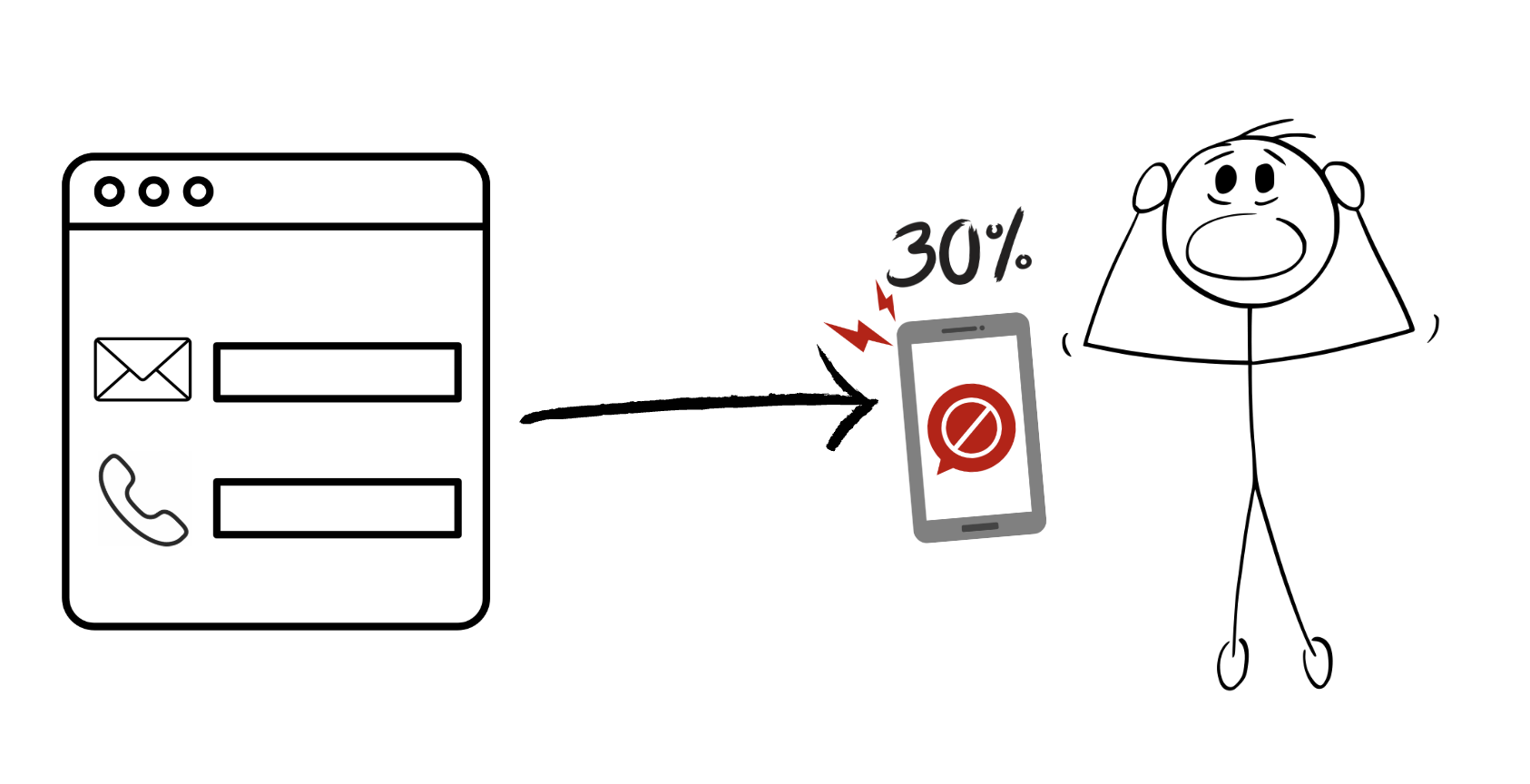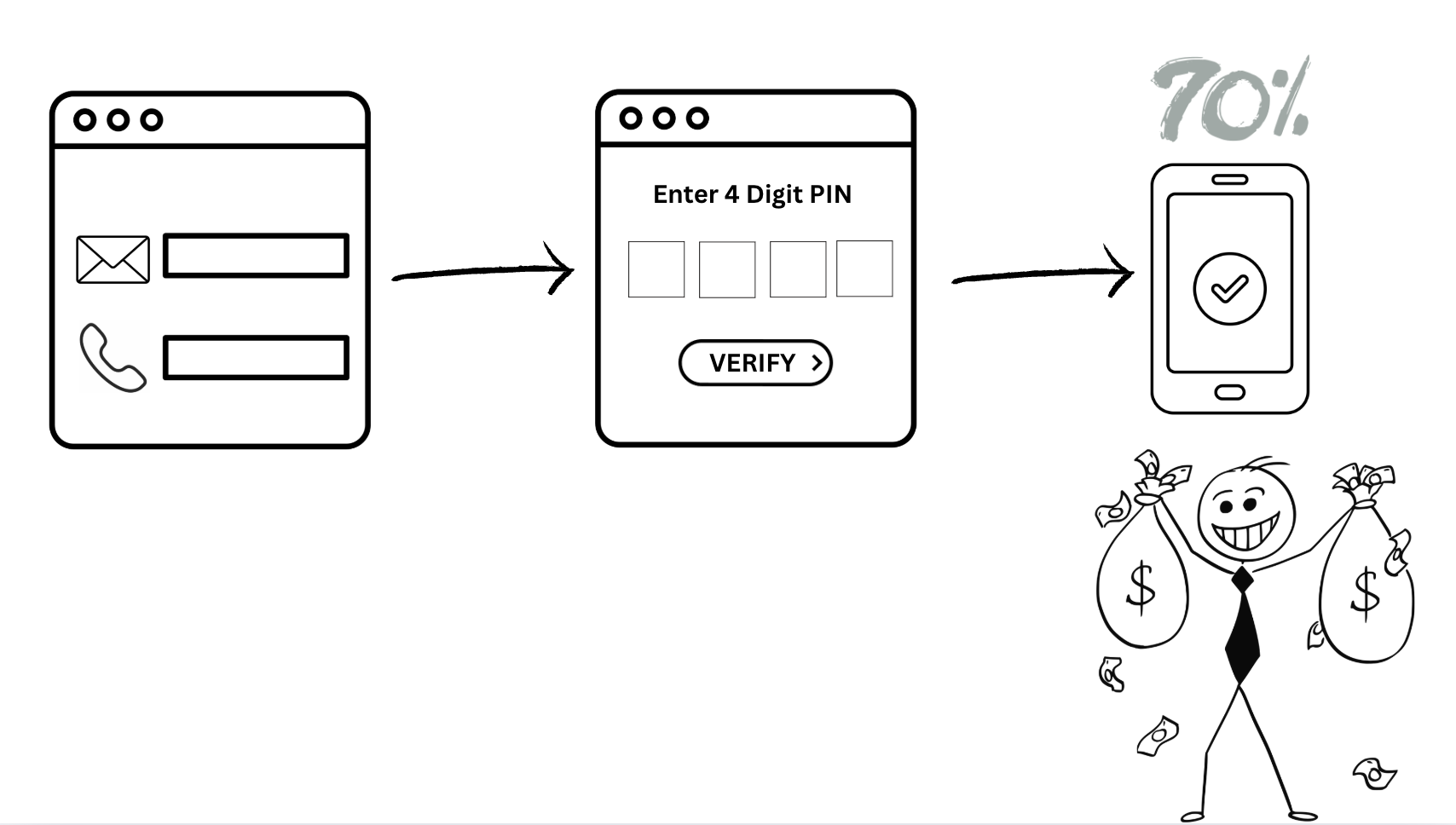Capturing a lead is one thing…
But connecting with a lead after it’s captured is a completely different ballgame.
In fact, most businesses report that they’re able to only connect with about 20-30% of leads that they capture.
If you’re a lead generator, performance marketer, or even a lead seller, then this huge drop-off has a massive impact on your bottom-line and ROI.
That’s why in this post, I’m going to show you one simple thing that you can do in your lead capture forms to dramatically increase your lead contact rates.
We’re talking about a potential 2-3X increase.
Check out this free training video where I walk you through the entire process in under five minutes!
5 Reasons Why You Should Care About Increasing Your Contact Rates?
Before we dig into the “how,” let’s spend a little time on the “why.”
If you’ve been generating leads for a while, you already know that collecting a prospect’s phone number is only half the battle.
It doesn’t matter if your funnel is brilliantly designed or if you’re generating leads at scale—if your team, clients, or buyers can’t reach those leads, the entire sales process stalls and customer acquisition costs go through the roof.
So, let’s break it down with five concrete reasons you must focus on increasing your lead connect rate (use this if you need to make the case to anyone on your team).
Reason #1: Better Morale for Your Internal Team
Calling leads who never pick up is exhausting and demoralizing — we hear it all the time when speaking with LeadCapture.io customers who come to us for this very reason.
Imagine sitting in a call center (or a sales bullpen) all day, cycling through phone numbers, and hearing nothing but ringing or hitting endless voicemail messages.
Over time, this negativity impacts both individual performance and team spirit.
The result? Frustration, burnout, and even turnover.
By finding ways to increase contact rates, you automatically improve the day-to-day experience for your sales reps, lead qualifiers, or anyone else responsible for making calls.
Happy team, happy life!
Reason #2: You Save Time and Effort
If you’re the one personally calling your inbound leads, your time is unbelievably valuable.
Wasting it on disconnected or fake phone numbers isn’t just frustrating—it’s expensive.
In fact, at LeadCapture.io we won’t take a demo if the phone number isn’t verified. That’s why we get 80%+ contact rates.
Every minute spent dialing a bad number is a minute not spent closing deals or generating new opportunities.
By putting systems in place to verify numbers and ensure they’re real, you can instantly become more efficient.
The payoff is both psychological (less frustration) and financial (time really is money).
Reason #3: Your Clients and Lead Buyers Will Love You
And keep working with you as a result!
If you’re generating leads for clients, one of the primary ways they judge your performance is the quality of the leads you deliver.
If those leads rarely pick up the phone, it won’t matter how many you send over; your client will quickly grow frustrated and question your value.
Conversely, if you’re known for delivering leads with high connect rates, you’ll stand out in the marketplace. Your clients will recognize that your leads aren’t just data points—they’re real people who will actually answer the phone.
Reason #4: Separate Yourself in the Lead-Selling Market
For those who sell leads, competition can be fierce. Anyone can slap up a landing page, collect phone numbers, and pass them along.
But the real magic is delivering qualified leads who actually pick up.
If you can provide phone-verified leads or implement extra steps to ensure the lead is truly engaged, you give yourself a huge competitive edge. That’s how you build your reputation and keep clients coming back month after month.
Reason #5: Better ROI on Your Marketing Campaigns
Finally, let’s talk dollars and cents.
Every campaign you run—whether it’s Facebook Ads, Google Ads, native ads, or any other platform—costs money.
Heck, even SEO isn’t cheap. Trust me.
The higher your lead connect rate, the more likely you are to close deals and see a return on that ad spend. Simple as that. If half your leads are bogus or unreachable, your marketing ROI takes a direct hit. By focusing on verifying phone numbers and increasing contact rates, you’ll ensure more high-intent leads move through your sales pipeline.
The Traditional Way vs. The Simple Adjustment
Now that we know why it’s so important to increase customer contact rates, let’s talk about how most people handle inbound lead generation—and why that approach often falls short.
How Most People Do It
For many companies and marketers, the workflow goes something like this: 
Landing Page or Web Form – You collect a prospect’s name, email, phone number, maybe a few qualifying details.
Lead Delivery – That information is instantly sent to a CRM or a spreadsheet, or forwarded to a sales team, call center, or a client if you’re selling the leads.
Dial, Dial, Dial – You or your team (or your client) starts calling those phone numbers, often within a few minutes.
On paper, it sounds straightforward. But the problem is, in many cases, 60-70% of those leads never pick up. Sometimes that’s because the phone number is fake. Other times, the person might have typed in their old landline number or they’re simply not in a position to answer.
The result is that you have an entire funnel built around unverified contact information.
This leads to wasted time, money, and morale.
The Simple Adjustment: Phone Verification Before Delivery
Here’s the magic trick: verify the phone number before you ever send it over to your sales team or lead buyer.

A quick text message with a four-digit code can confirm the phone is real—and that the person you’re about to call is actually holding it.
Why does this matter so much?
Because once a lead jumps through that tiny hoop, you know they’re at least somewhat serious, or at least they provided a real phone number. This small change can double or even triple your connect rate. That’s massive if you’re looking to increase contact rates and ensure you’re making the most out of your marketing dollars.
How to Set It Up
At this point, you might be thinking, “Great, so how do I actually implement this phone verification step?” The short answer is: there’s a hard way and an easy way.
The Hard Way (DIY with Twilio or some other service)
If you’re tech-savvy or have a developer at your disposal, you can absolutely build your own system. Here’s a high-level look at what you’d need to do:
- Sign Up for a Service Like Twilio – Twilio is a popular communication platform that lets you programmatically send SMS messages. You’ll need to buy a phone number (or multiple numbers), set up A2P, and make sure you comply with regulations, and pay fees for both the SMS and verification of the message.
- Get an API Key – You’ll connect your form to Twilio’s API. This usually involves writing some backend code in a language like PHP, Python, or Node.js.
- Build a User Experience – On the front end, you’ll need to design a seamless flow where someone inputs their phone number, receives a text with a verification code, then enters that code into your form. If you do this wrong, then your conversion rate could tank.
- Handle Edge Cases – What happens if the text doesn’t arrive? What if the user enters a wrong number? You’ll have to account for all sorts of user behaviors and technical glitches.
If you’re comfortable with coding and have the time, this can be a fun project. But for most lead generators and marketers, it’s a little too involved, especially when you factor in compliance, user experience, and ongoing maintenance.
The Easy Way (LeadCapture.io)
If that last section made your head spin, don’t worry. There’s a far easier way to implement phone verification right away: LeadCapture.io.
It’s a platform specifically designed to help marketers, lead generators, and lead sellers create high-converting, compliant lead capture forms with built-in phone verification.
Here’s how it works:
- Build Your LeadCapture – You can quickly set up a new form or use an existing one from a template. Add your standard fields (name, email, phone) along with any additional qualifying questions you need (like location, budget, preferences, etc.).
- Enable Phone Verification – Within the LeadCapture.io dashboard, there’s a simple toggle to enable phone verification. That’s it. In many cases, you literally just flip one switch.
- Customize Verification Steps – Choose how many digits your code will have (four usually works best). Decide if you want to store unverified leads in a separate list or discard them altogether.
- Automatically Pass the Verified Leads – Once a lead successfully verifies their phone, that record is immediately flagged as verified and passed on to your sales team, client, or lead buyer. Everyone knows with certainty that the lead’s phone number is real and in their hands.
No messing with APIs, no trying to figure out text message deliverability, and no expensive developer hours. Plus, the platform helps you stay on the right side of compliance (like TCPA in the US), which is crucial if you’re using automated texts or calling people who filled out a lead capture form.
Final Thoughts on Increasing Contact Rates with Your Leads
Increasing lead connect rates might seem like a small tweak in the grand scheme of your marketing funnel, but it’s actually one of the most impactful changes you can make.
High-intent, phone-verified leads lead to better conversations, more sales, and happier teams—and that’s what we’re all after, right?
So if you’ve been scratching your head, wondering why your connect rate is stuck in the 20–30% range, consider implementing phone verification. Yes, you might lose a few leads along the way. But the leads you keep will be the ones who genuinely want to hear from you (or your client).

